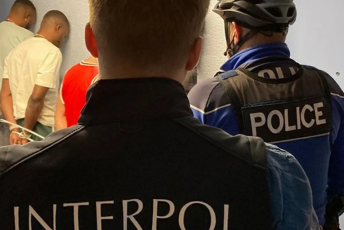On 27 February 2019, the United Nations (UN) Security Council conducted an open, high-level debate about the African Union’s (AU’s) Silencing the Guns initiative, which is aimed at improving the prevention, management and resolution of conflict in Africa. The debate also looked at cooperation between the UN and other regional organisations, like the AU and the Arab League of States, to maintain peace and security in the region.
In Libya, achieving this goal seems difficult given the rapid emergence of illicit weapons markets, particularly on the Internet. Under Muammar Gaddafi, the domestic arms trade in Libya was well regulated. There was virtually no record of a black market until the 2011 revolution, which laid the groundwork for the sale and proliferation of illicit arms beyond Libyan borders. As a result of unrest and conflict, many Libyans have acquired firearms to defend themselves, regardless of their political affiliation.
A 2016 report titled The Online Trade of Light Weapons in Libya by Small Arms Survey (SAS) tackled a little known aspect of arms trafficking, namely the online sale of small arms via social media networks. The same report showed that the majority of sellers are young individuals aged between 20 and 30 years, who come from different backgrounds.
According to the report, most of the items posted on social media groups ‘have no asking price’. Sellers receive offers from interested buyers, sometimes resulting in ‘bidding contests’. A heavy machine gun typically goes for around US$5 900, recoilless weapons about US$4 000 each and rocket launchers US$6 500 each.
According to a different SAS paper, there are four categories of participants in the online arms trade: individuals who buy arms as a hobby for sport or self-defence, and who are usually buyers only; small-scale commercial traders, typically individuals, who buy and sell arms; large-scale commercial traders linked to commercial enterprises, who also buy and sell; and traders associated with armed groups, who are primarily sellers.
Tracking the online sale of arms is challenging, particularly given the borderless nature of the trade. Offenders are usually a step ahead of law enforcement agencies and social media platforms’ reporting mechanisms.
SAS researchers followed groups across social media sites and found the largest volume of sales appeared to be taking place through Facebook. However, they believed the data only covered a small proportion of the total online arms sales, and indicated that the ‘marketplace is growing in terms of both demand and supply.’
The situation benefits terrorist groups and armed militias as well as individuals willing to buy weapons illegally, turning social media platforms into a kind of ‘weapons bazaar’ for everything from small arms to heavy weaponry.
In January 2016, Facebook banned the sale of arms from the platform, even in countries where it is not banned by national legislation. However, these new rules and standards were not effective, as arms traders continued to use Facebook through closed and secret groups – reportedly with thousands of members. Traders can easily post pictures and coordinate transactions for several months before being detected and removed through user alerts.
According to SAS, the illicit online arms trade in Libya is believed to be mostly an internal market. Yet, it deserves greater regional scrutiny, since the trafficking of arms in Libya arguably facilitates the illicit circulation of arms in the region, where it could exacerbate unrest and fuel new conflicts.
Rim Dhaouadi, Researcher, ENACT project, ISS







